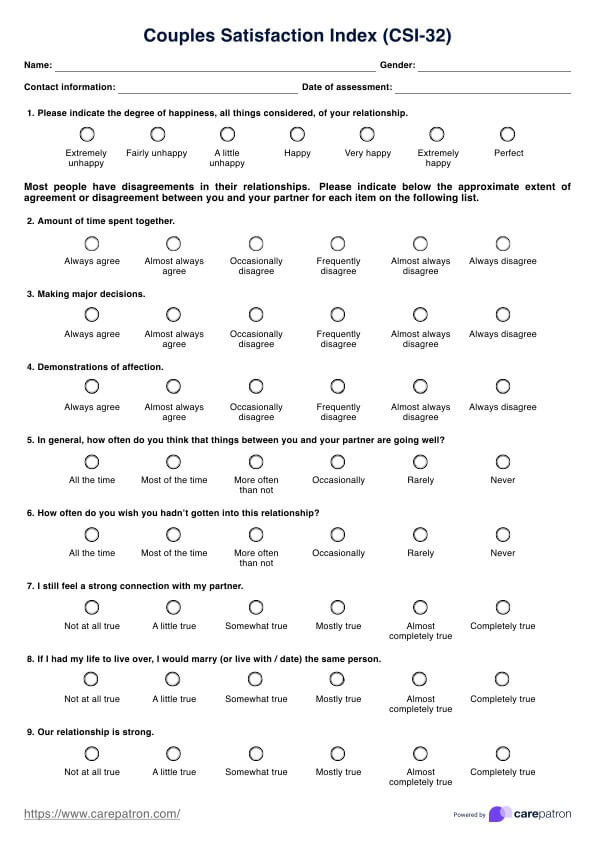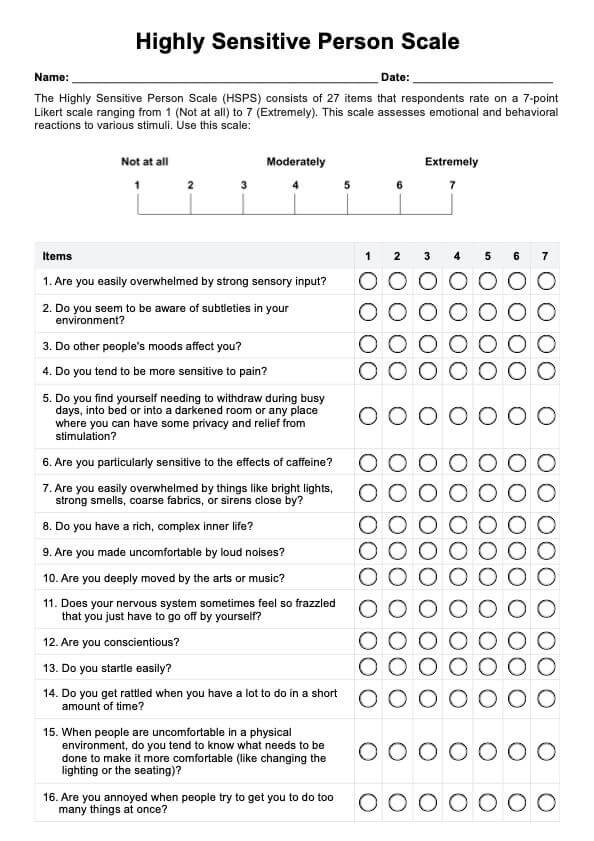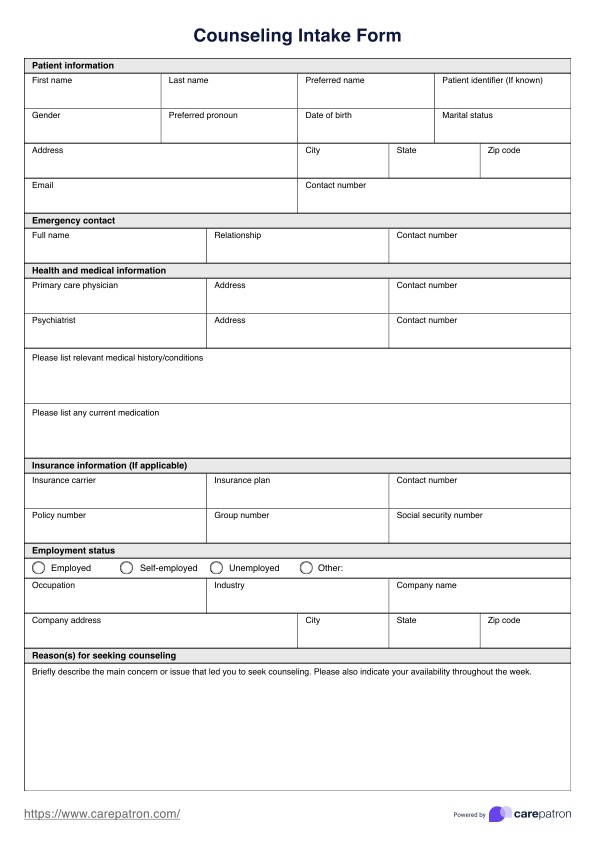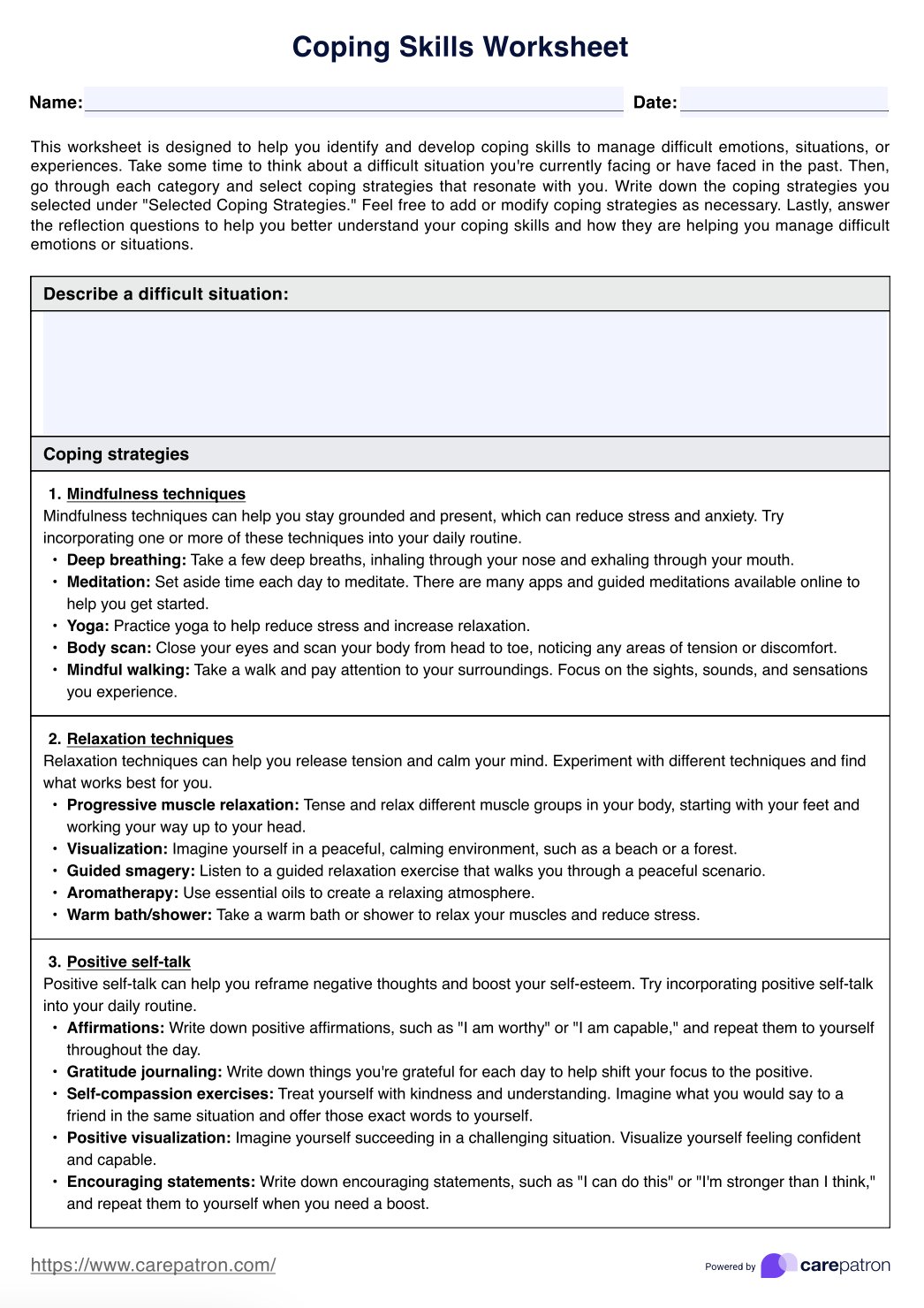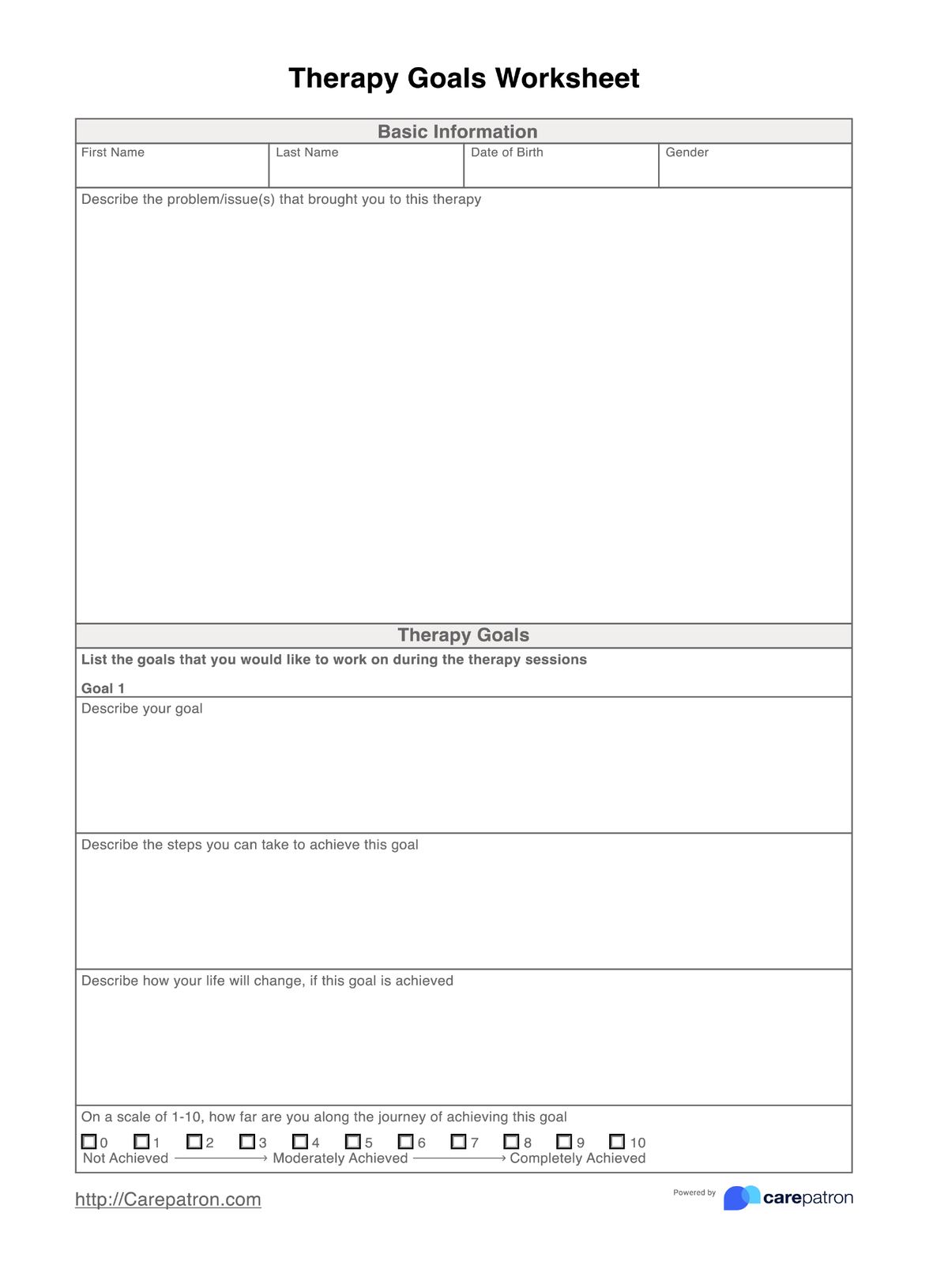Sex and Recovery CBT Worksheet
Dive into our comprehensive guide on the Sex and Recovery CBT Worksheet and discover why Carepatron is the ultimate platform for your therapeutic journey.


What Is A Sex and Recovery CBT Worksheet?
Hey there, passionate caregivers and self-improvers! Let's dive into a resource that often flies under the radar but can transform many individuals' lives. Meet the Sex and Recovery CBT Worksheet—a bridge to understanding, healing, and rediscovering intimacy.
This isn't just any worksheet—it's an empowerment tool. Designed with Cognitive Behavioral Therapy (CBT) principles, this worksheet aims to help individuals navigate the often complex intersections of intimacy, sexual expression, and personal recovery. Whether someone is recovering from addiction, trauma, or any unique challenges, rebuilding a healthy relationship with one's sexuality is a journey. And guess what? This worksheet is the map!
The is structured to break down misconceptions, confront negative beliefs, and set the stage for positive sexual experiences moving forward. It's the conversation starter many people have been waiting for but needed to figure out how to approach. And here's the icing on the cake: We've got a free PDF version just for you. Keep reading to explore its applications and see real-world examples in action.
So, whether you're a therapist aiming to provide the best tools for your clients or someone personally navigating the path of recovery, this guide will unveil how the Sex and Recovery CBT Worksheet can be a game-changer. Let's journey together!
Sex and Recovery CBT Worksheet Template
Sex and Recovery CBT Worksheet Example
How To Use the Sex and Recovery CBT Worksheet
Navigating the realm of sex and intimacy in recovery can be complex. The "Sex and Recovery CBT Worksheet" guides therapists and their clients to explore this sensitive area and promote positive change. Let's walk through the process step-by-step.
Step 1: Set A Safe Environment
Begin by ensuring the patient feels safe, comfortable, and understood. Discuss confidentiality and emphasize the importance of honest self-reflection during the process.
Step 2: Introduce the Worksheet's Objective
Clearly explain the aims of the worksheet — understanding the distinctions between intimate and impulsive sex, recognizing how impulsive sex can act as a trigger for substance use, and realizing the significance of intimacy and stable relationships in recovery.
Step 3: Navigate Through the Worksheet Together
Go through each section with the patient, allowing them time to read, understand, and internalize the content. Encourage open dialogue and answer any queries they might have.
Step 4: Facilitate Self-Reflection
Ask the patient to contemplate and document their experiences with impulsive sex, drug use, and healthy intimate relationships. Ensure they understand this is a judgment-free zone.
Step 5: Discuss Shared Answers
Once the patient has filled in their answers, discuss them openly. Provide therapeutic insights, draw connections to their recovery journey, and applaud their courage to face these topics head-on.
Step 6: Assign the Homework
The homework section is vital. Ensure the patient knows the importance of applying these lessons outside the therapy room. Recommend that they take the time to genuinely reflect on ways to improve their current or future relationships.
Step 7: Schedule a Follow-Up Session
End the session by scheduling a follow-up to discuss the homework and any emerging feelings or realizations they might encounter during their self-reflection.
The "Sex and Recovery CBT Worksheet" is an invaluable tool for delving into the intricate dynamics of sex in the context of recovery. Properly utilizing this worksheet can provide clarity, enhance therapeutic relationships, and bolster the recovery journey. As you progress, remember that healing and understanding are iterative processes, and each step paves the way for profound personal growth.
When Would You Use This Form?
Navigating the delicate balance between intimacy, sexual behavior, and recovery can be challenging for therapists and their patients. The "Sex and Recovery CBT Worksheet" is designed to facilitate deeper conversations and insights into this intricate relationship. But when is the best time to introduce this worksheet into therapy? Let's delve into the situations where this resource can be invaluable:
- During Initial Sessions: For therapists working with patients starting their recovery journey, this form can act as a touchpoint to understand their historical relationship with intimacy and substance use.
- Highlighting Potential Relapse Triggers: If a patient has identified sexual behavior as a potential relapse trigger or has previously experienced relapses following impulsive sexual behaviors, this worksheet can guide them through recognizing and addressing these patterns.
- Deepening Patient Self-Awareness: For patients already in the mid-stages of their recovery journey, this worksheet can serve as a reflection tool, allowing them to delve deeper into their behaviors, understanding, and making healthier choices.
- Establishing Future Relationship Goals: For patients looking to form new relationships or improve existing ones in their recovery journey, the worksheet can guide them in defining and understanding what a healthy intimate relationship looks like.
- Group Therapy Settings: This worksheet can also be adapted for group therapy, allowing members to share and discuss their insights and learn from each other's experiences.
In conclusion, the "Sex and Recovery CBT Worksheet" is versatile and can be incorporated into various stages of a patient's recovery journey. It's a tool that assists in fostering understanding, setting goals, and promoting healthier relationship choices.
Benefits of the Sex and Recovery CBT Worksheet
Enhanced Patient Self-Awareness
Utilizing this worksheet can lead patients to deeper self-reflection about their sexual behaviors and their link to their substance use. By recognizing patterns, they're better equipped to make healthier choices in the future.
Targeted Conversation Starter
The structured format of the worksheet provides therapists with a focused way to initiate discussions on sensitive topics like intimacy, ensuring that crucial areas aren't overlooked during therapy sessions.
Support in Identifying Relapse Triggers
The worksheet aids in highlighting potential triggers related to impulsive sexual behaviors. By understanding these, patients can develop strategies to navigate situations that might previously have led to relapse.
Guidance in Relationship Building
The worksheet serves as a blueprint for those in recovery looking to foster healthier relationships. It encourages patients to envision and work towards intimate relationships rooted in mutual respect and understanding.
Adaptability for Group Therapy
The format is not only suitable for individual sessions but is also valuable in group therapy settings. It allows members to share experiences, fostering a supportive community atmosphere.
Facilitation of Homework Assignments
With clear prompts and a structured layout, therapists can easily assign relevant sections as homework. This extends the therapeutic process outside the clinical setting, empowering patients to reflect actively.
Research & Evidence
Cognitive Behavioral Therapy (CBT) has been used since the 1960s, and its efficacy has been well-established through extensive research. Rooted in a blend of cognitive and behavioral therapies, CBT operates on the premise that our thoughts, feelings, and actions are interconnected. Changing negative thought patterns can result in altered behaviors and emotions.
When addressing issues like substance abuse and its relationship with sexual behaviors, CBT offers a structured approach. The "Sex and Recovery CBT Worksheet" taps into this structured methodology to help individuals dissect their behaviors, understand their motivations, and strategize for healthier patterns. Research from the National Institute on Drug Abuse (NIDA) supports the use of CBT in treating substance use disorders, stating its effectiveness in addressing the critical behaviors and situations related to drug abuse.
Moreover, CBT's role in addressing impulsive behaviors, including impulsive sex, has seen positive outcomes. A study published in the Journal of Clinical Psychology found that CBT interventions significantly reduced impulsivity in individuals. Recognizing the link between impulsive sex and substance relapse, this worksheet is grounded in evidence-based practice to tackle both.
In terms of relationships and intimacy, CBT helps individuals cultivate a deeper understanding of their relationship dynamics, aiding in healthier relationships. Studies have consistently shown that having supportive relationships aids recovery, further cementing the importance of addressing intimacy in therapy.
References
- National Institute on Drug Abuse. (2018). Principles of Drug Addiction Treatment: A Research-Based Guide (Third Edition). [Link to NIDA's official website]
- Litt, M.D., Kadden, R.M., Kabela-Cormier, E. (2009). Individualized Assessment and Treatment Program for Alcohol Dependence: Results of an Initial Study to Train Coping Skills. Journal of Clinical Psychology, 65(11), 1230–1245.
Commonly asked questions
Absolutely. While professionals can guide you more effectively, anyone can use the worksheet as a self-help tool. However, discussing your results with a therapist is recommended.
Carepatron prioritizes user data privacy. It employs robust security protocols to keep all your information confidential and safe.
Carepatron offers a range of packages, some of which are free. You can explore the pricing options to find one that suits your needs.


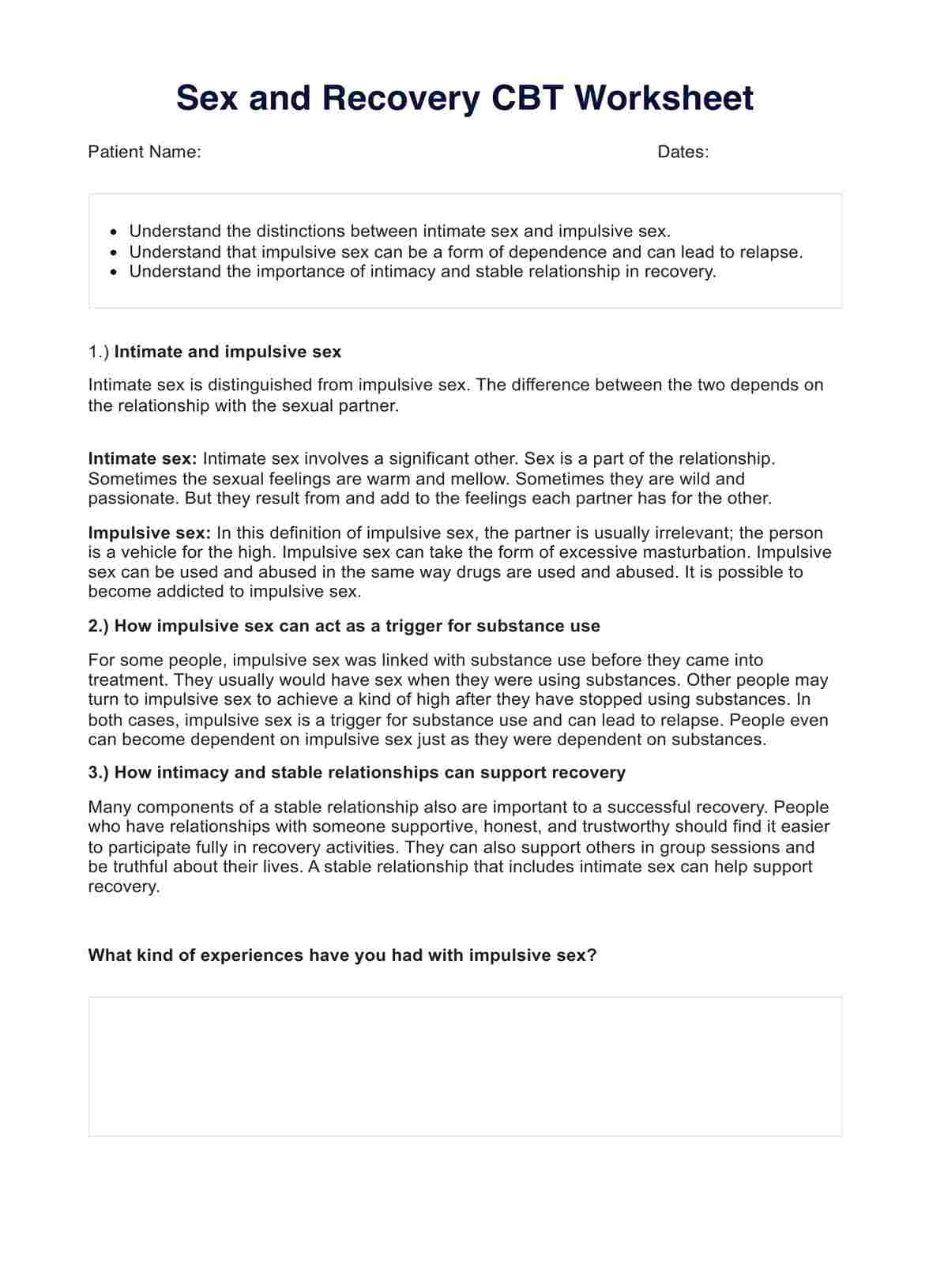
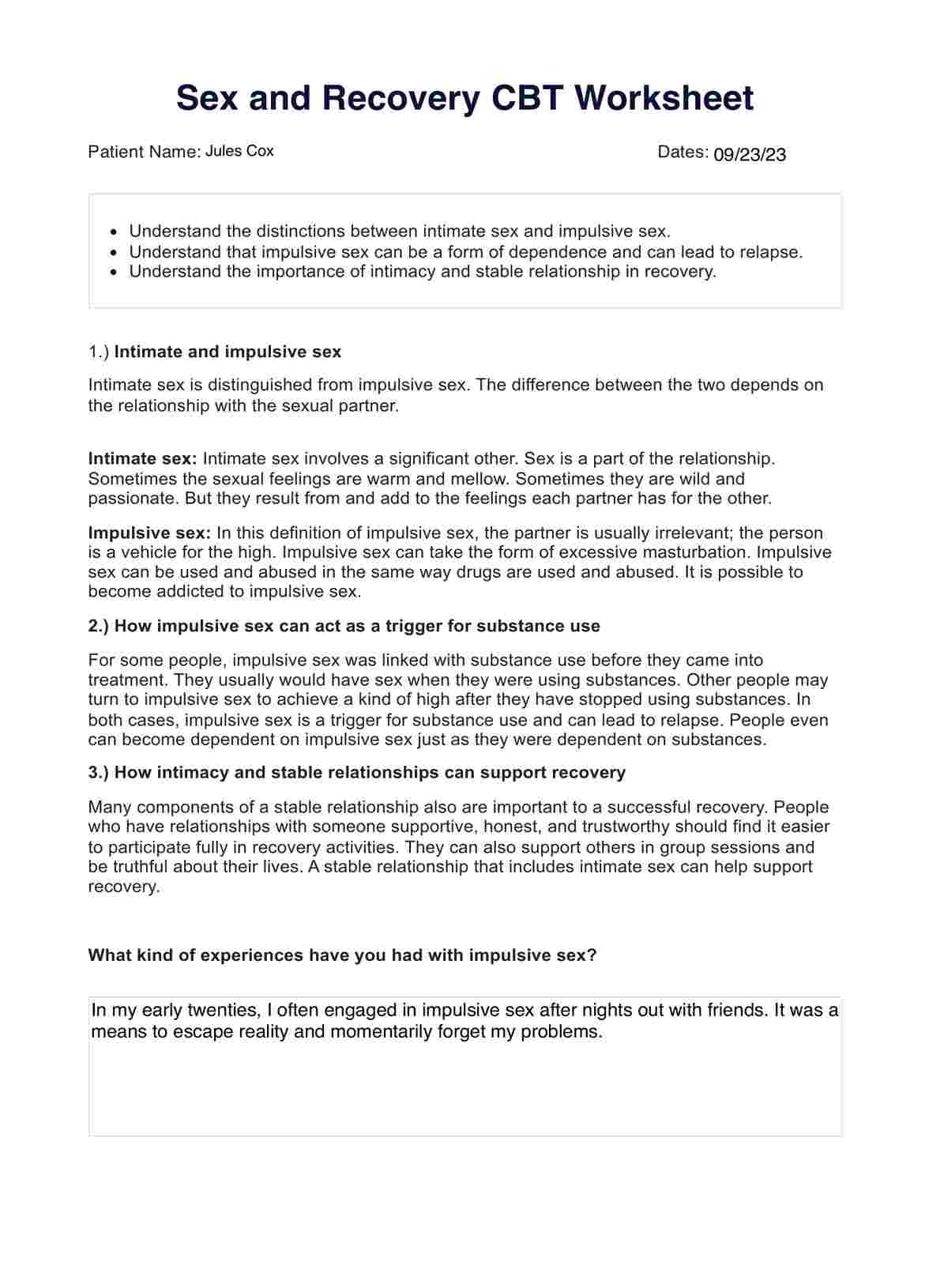

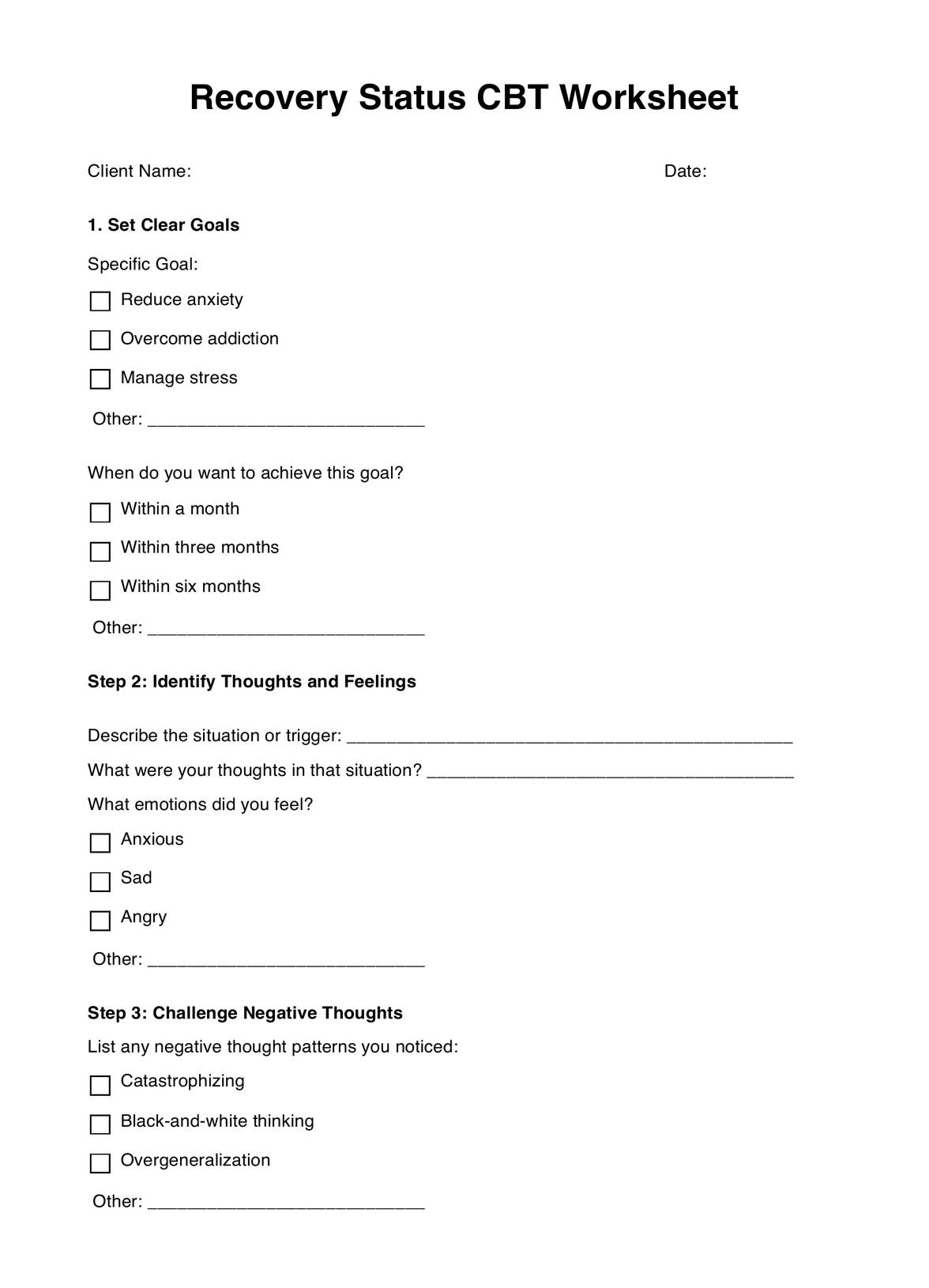

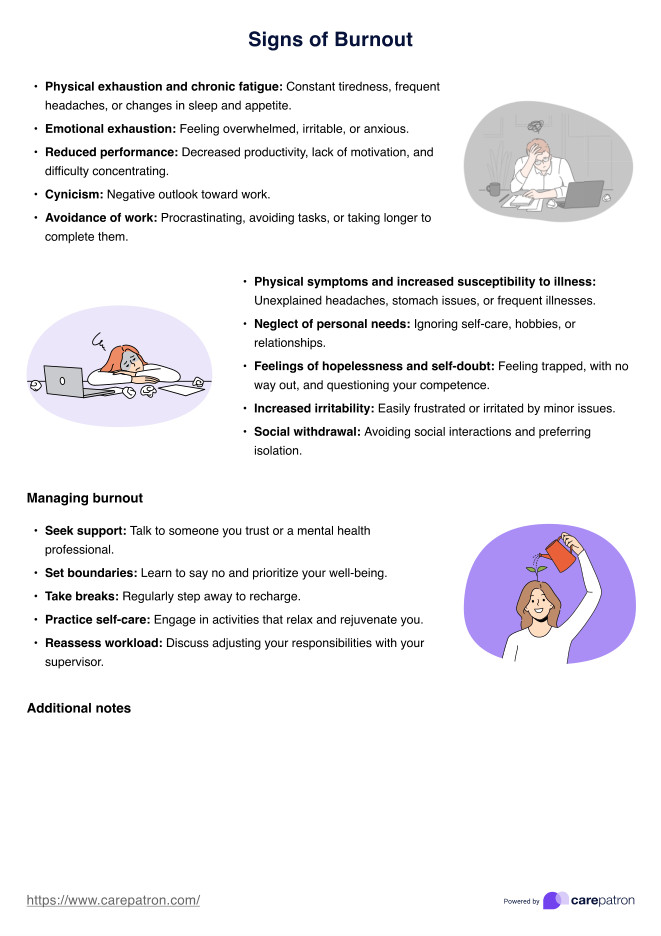
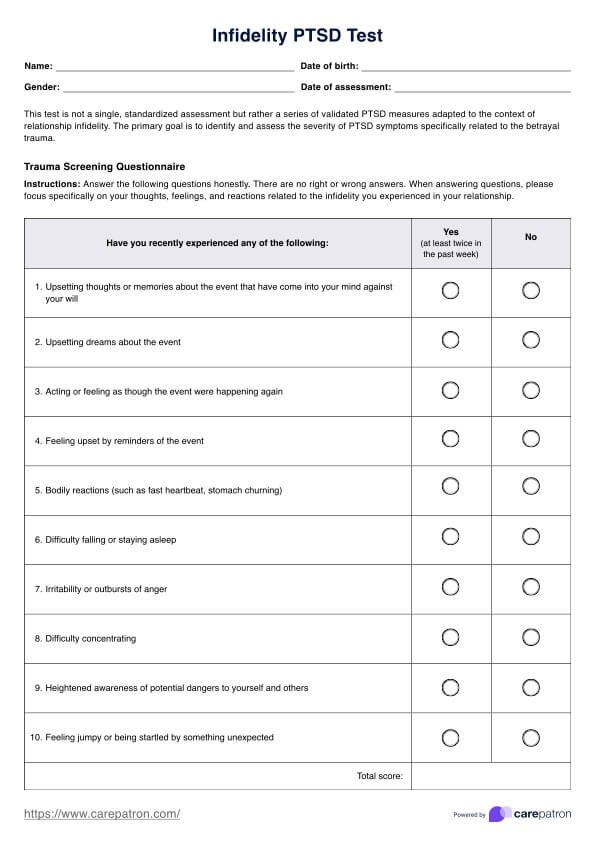









-template.jpg)










































































